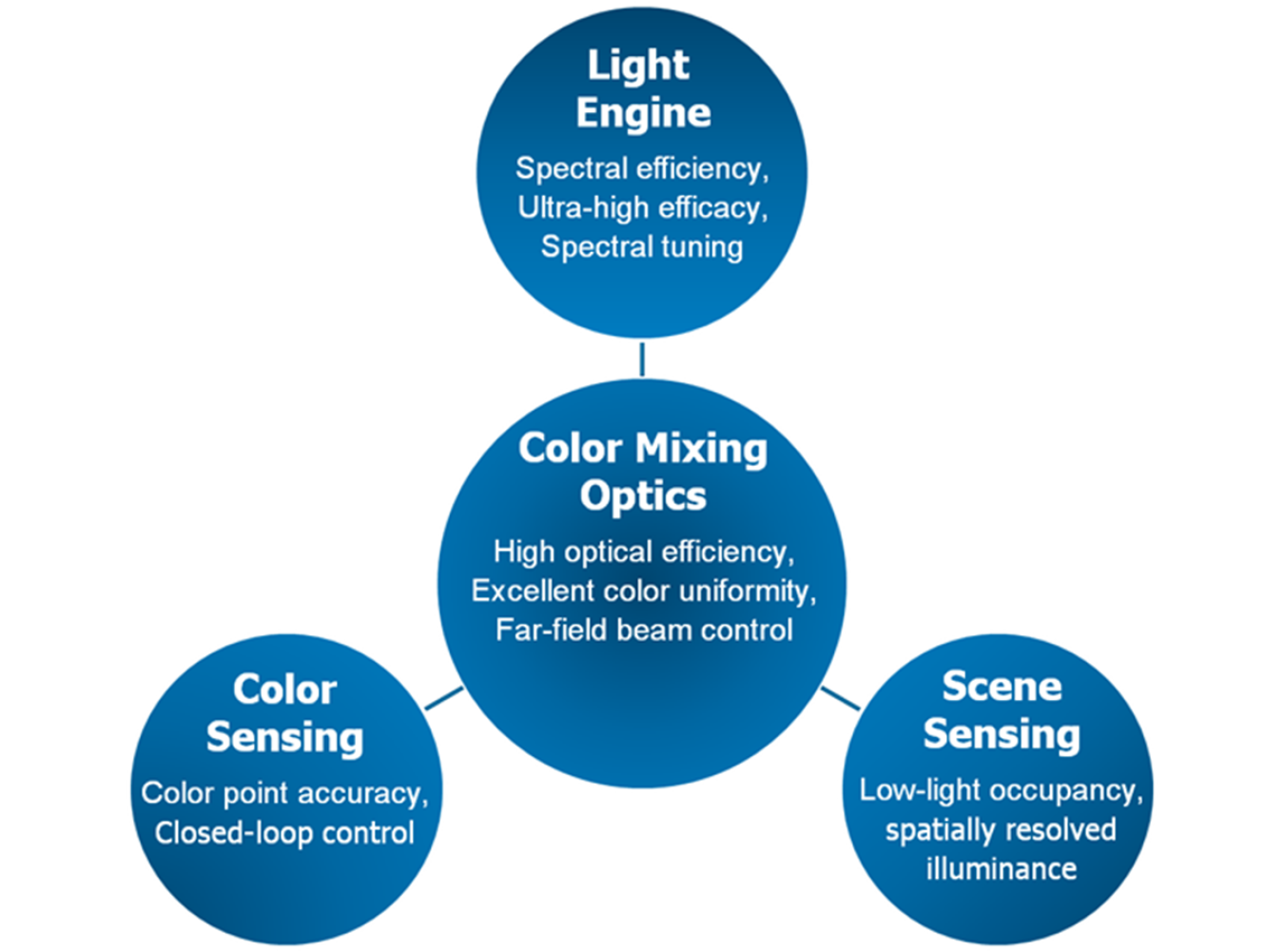
The principal thrusts of Cree’s project, with interrelated tasks addressing high spectral efficiency, efficient color-mixing optics, dynamic on-board color sensing, and intelligent scene sensing for increased light utilization.
With the help of DOE funding, Cree has achieved significant advancements in LED luminaire efficacy, optics design, color tunability, and light utilization, which will enable ultra-high-efficacy luminaires with superior beam definition and control compared to conventional fixtures, leading to higher spatial light utilization based on application needs. In addition, the advanced scene-sensing and controls that Cree developed as part of the same project are expected to directly benefit automated dimming, which reduces time-averaged lighting-energy consumption.
Among the project’s achievements:
- Light engines composed of discrete emitters and efficient, robust narrow-band downconverters, which enabled peak warm-white luminous efficacy >200 lm/W. Such light engines are a step toward commercially viable ultra-high-efficacy luminaires that meet DOE’s ambitious efficacy projections for 2020 and beyond.
- Low-profile optical designs with highly uniform (≤0.003 Δu’v’) near- and far-field color mixing at high (>90%) optical efficiency and high asymmetry or uniformity. The scalable hybrid designs that were developed are expected to be utilized in a variety of indoor and outdoor luminaires.
- Ultra-compact color sensors providing real-time input for accurate (≤0.003 Δu’v’’) luminaire color-point control over a wide gamut range. These sensors may simplify factory color-point tuning, mitigate color-point drift over the lifetime of the luminaire, and increase inter-luminaire color consistency.
- Ultra-compact, low-cost scene sensors for accurate (<1% false-positive rate in low-light ambient) occupancy detection as input for autonomous dimming controls. Such dimming could enable >30% energy savings in several indoor lighting applications.
Cree’s DOE-supported innovation in these technology focus areas will set the stage for further development toward productization at Cree. In addition to foreseen U.S.-based manufacturing of program-derived technologies, Cree may also engage domestic manufacturers via contractual or licensed manufacturing agreements to quickly scale mass production. (May 2018)
Return to Research Highlights.

